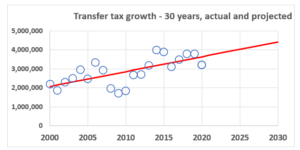Safety, traffic, transit, parking –
Mayor and City Council
City of Piedmont
120 Vista Avenue
Piedmont, CA 94611
Subject: Accessory Dwelling Unit (ADU) -Revisions
Dear Mayor and Members of the City Council
As a planner, I have long supported allowing more ADUs when they were virtually outlawed by most cities. However, it now seems like the State may have overreached in taking away cities’ rights to regulate ADUs.
Piedmont may be rushing action on a revised ADU ordinance when the state law only became effective three weeks ago. I have checked with several other jurisdictions and they are just beginning to study the issue and have not yet began public hearings. There is a lack of urgency because the State Housing and Community Department has not yet published its implementation guidelines.
Our premature actions may necessitate subsequent otherwise unneeded revisions when the HCD guidelines are issued. Also, if Piedmont does not have its own local ordinance in place, then there would be no impact on the potential production of ADUs, because the state’s rules would apply by default, until we adopted our own. So there is little real urgency and there is time for proper study.
What is being proposed largely precludes the normal community discussion which Piedmont residents are used to. In particular, just following the law and accurately measuring the half mile walking distance from bus stops will require some time. And if we were to provide for street-safety thresholds, also consistent with the law, additional time would be required for analysis.
I have including pertinent sections of the newly adopted state law to illustrate the following concerns:
66582.2 (a) A local agency may…
(A) Designate areas within the jurisdiction of the local agency where accessory dwelling units may be permitted. The designation of areas may be based on criteria that may include, but are not limited to, the adequacy of water and sewer services and the impact of accessory dwelling units on traffic flow and public safety.
(Presumably this section means that the jurisdiction may designate areas where accessory dwelling units may not be permitted, or, there should also be latitude to allow ADUs but with some minimum of off-street parking provided)
66582.2 (d) Notwithstanding any other law, a local agency, whether or not it has adopted an ordinance governing accessory dwelling units in accordance with subdivision (a), shall not impose parking standards for an accessory dwelling unit in any of the following instances:
(1) The accessory dwelling unit is located within one-half mile walking distance of public transit.
66582.2 (j) (10): “Public transit” means a location, including, but not limited to, a bus stop, or train station where the public may access buses, trains, subways, and other forms of transportation that charge set fares, run on fixed routes, and are available to the public.
(This definition would preclude counting mere proximity to a bus route where there is no designated bus stop)
66582.2 (o) This section shall remain in effect only until January 1, 2025, and as of that date is repealed.
Analysis
Transit Availability: Some of the restrictions on cities’ powers largely apply to homes within a half mile, by foot, from a bus stop (66582.2 {d} {1) The staff report declares that every part of Piedmont is within a half mile of a bus stop. While largely true, that conclusion was apparently based on a crow-fly review since it’s not entirely true. For example, I took well-known Wildwood School as a starting point, and using my admittedly less accurate car’s odometer, I have checked the distance along streets, (not crow-fly distance), and found that it is at least a half mile to the nearest bus stops for AC Transit Lines 29, 12, 33 and P. Because of curving streets and a few cul-de-sacs, there are probably several other areas which are beyond a half mile. Also Line 33 above the central area has only weekday commuter service with no midday or weekend service. These transit deficiencies are important because the statute’s justification for not providing any new parking for an ADU, is that convenient transit is available. Where transit is not available, some relief seems justified.
Traffic and Emergency Vehicle Safety: There are a few existing, seriously impacted and unusually narrow streets where on-street parking is already extremely impacted, and emergency vehicles may already have trouble getting through. The extremely narrow stretch of Scenic Avenue comes to mind. The new state law (66582.2 {a}) allows a city to designate areas not suitable for additional ADUs for safety reasons. To be objective and defensible, I’d suggest language like: The City has determined that certain existing streets which are of insufficient width according to accepted Fire Protection standards, and such streets already allow on-street parking, and accordingly, the provision of one parking space per ADU is required, and such spaces may be open and tandem: (street names to follow).
Correction of Existing Code Violations: As I am sure you all know, there have been a lot of historic or even recent conversions of garages to living quarters for the primary dwelling unit. This is distinct from cases where a parking deficiency is legally non-conforming (grandfathered). If such a residence were now to further worsen the on-street parking demand by adding one or even 2 ADUs, that would add to the existing on street parking conflicts. Without violating the new law’s prohibition on requiring any parking for the ADU, the city could ask/require that existing zoning/building violations regarding parking be corrected. This would mandate that a parking analysis be done in concert with the ADU review. Merely suggesting that the building inspector will catch past violations is unrealistic.
Summary: In crafting the legislation, the legislature made some concessions for where transit was not conveniently available and for valid public safety reasons. I would expect that a good faith effort that is tailored to the unique nature of a city and supports its specific exceptions with a logical nexus to traffic safety and emergency vehicle access would escape much criticism. A Planning Commission member has suggested finding a legal way to provide notice of new construction to neighbors, but not deter from the ministerial approval requirement. There can be a lot of good ideas to protect neighborhoods, but not if the new ordinance gets rapidly approved as written.
We can ask, How can we work within the law, but tailor it to the uniqueness of Piedmont? I of course agree that most of Piedmont can and should accommodate additional ADUs with little impact. However, areas where most of the once existing one-car garages have already been converted to living quarters, and where the narrow streets are already jammed with parked cars, really shouldn’t have to accept more units with no new parking or even correcting past violations.
Therefore, I urge the Council to take a step back and allow the normal community involvement to take place. A citizens’ committee could assist the staff in reviewing the options and look at how other jurisdictions have looked at the issue.
Thank you for your consideration,
Michael Henn, Former Piedmont Planning Commissioner





Garrett Keating
My recommendation for story poles was somewhat facetious but given that the city won’t alert neighbors with a simple 3 x 5 postcard, what’s a neighborhood to do?
This requirement to not notify neighbors of ADU applications comes from City Attorney Kenyon and not planning staff. Kenyon said there is no legal prohibition to notify neighbors but in her opinion it would be “Draconian” to do so. Instead she implied the community would be better served through direct neighbor to neighbor communication. That position is logically flawed – such dialogue is best established through notification and without that requirement many of these neighbor to neighbor exchanges won’t happen and if they do, it will be after the fact.
More likely her position is self-serving – City Hall doesn’t want to take the phone calls from neighbors about these projects. Recall Maxwellton. No doubt it will be frustrating to have to deal with irate neighbors who aren’t aware of the ministerial ADU process, but that comes with the job. City Hall prides itself on customer service, but maybe it should think more about public service when it comes to ADUs.
Thanks to Councilwoman Cavenaugh and Planning Commissioner Levine for pushing for public notice.
Rick Schiller
A thanks to both Councilmember Jen Cavanaugh and Planning Commission Chair Jonathan Levine for their efforts to bring a wider community involvement to this important issue and resident notification.
My takeaway is based on the comment by City Attorney Kenyon near the end of the ADU Council discussion last night when Jen’s request for minimal resident notification was shot down. City Attorney Kenyon replied that the City is now in compliance. Is Piedmont the last out of compliance City? Highly doubtful. The State ADU Housing Guidelines, assuming the recently passed series of ADU legislations, is only a month away. (City Planner Mike Henn presented this information to Council last night.) Being out of compliance might bring a State letter, but Piedmont is far away from being sued by the State and would have everything in place to immediately pass ordinances to be in compliance once the compliance criteria are known.
I would like to have more resident notification and involvement with a Town Hall type meeting for the new ADU ordinances and guidelines. Council indicated they will treat the new Chapter 17 modifications and ADU Design Guidelines as living documents that can be amended as needed. Hopefully this will be done with the same swiftness as the very recent ADU implementations have been.